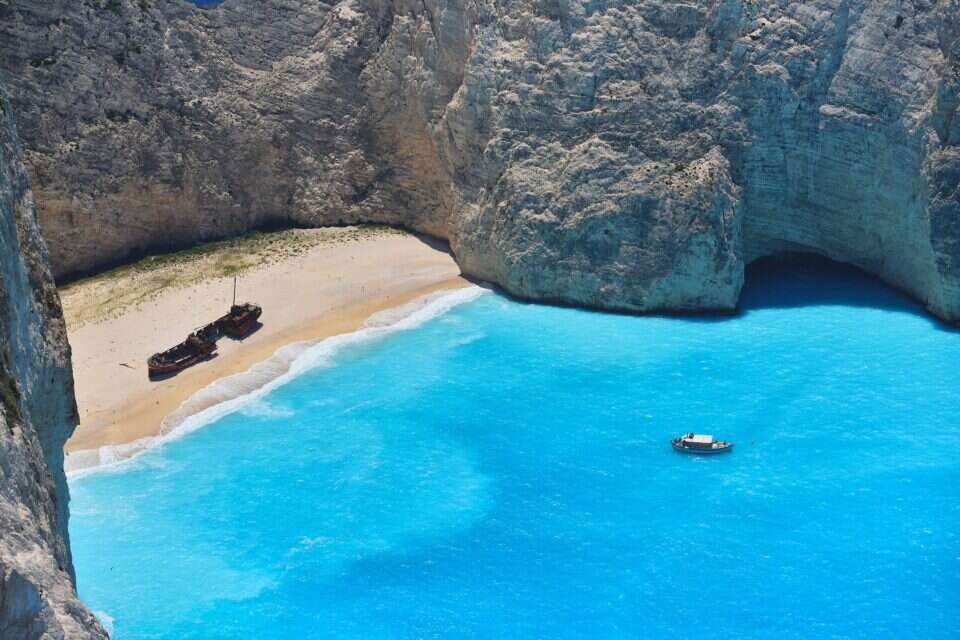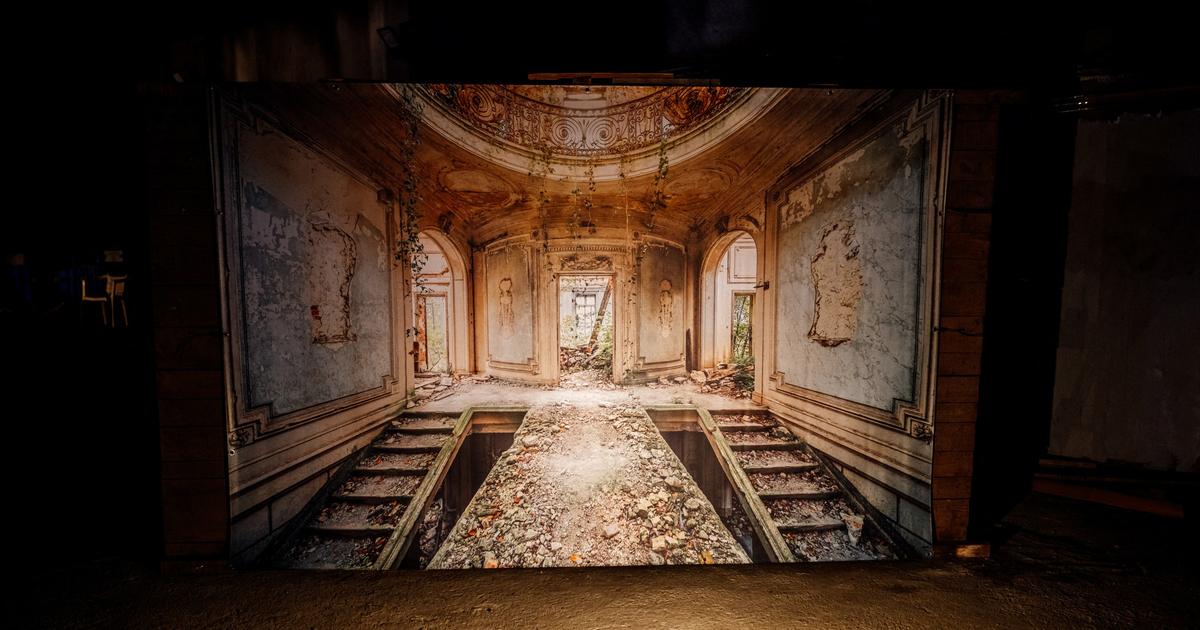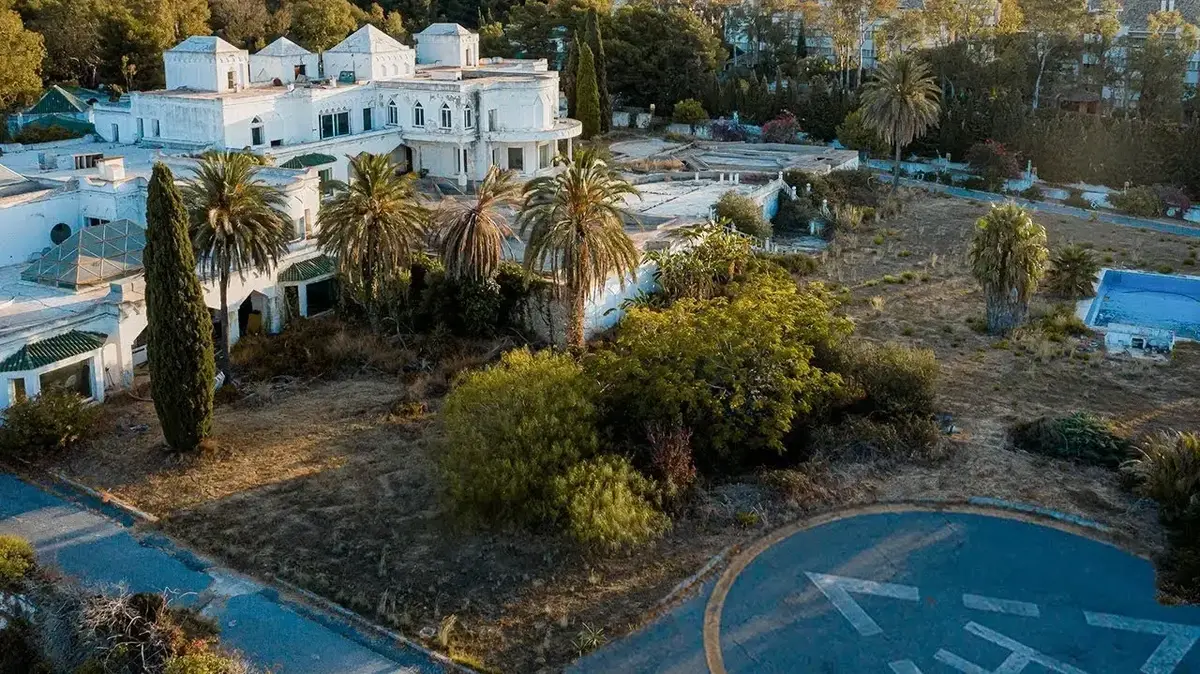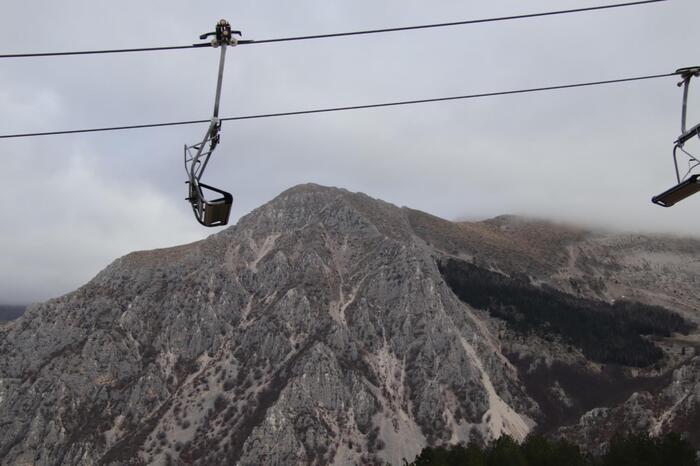Thunderbolts echoed across the plateau of the Moncenisio massif when the gunners fired their guns at the Alpine fortress of Varisello in 1909. For a quarter of a century, the bastion had guarded the pass at 2106 meters above sea level, which connects Turin in Italy with Lyon in France. Now explosive grenades hit their walls and exploded. Some bricks shattered, others flew through the air. The west wall collapsed.
More than 100 years later, the Bastion Varisello is a particularly imposing one of countless ruins in the Alps: abandoned mountain farmhouses, chapels, villas, factories and sports facilities rise in many high valleys, sometimes only as ruins, sometimes amazingly well preserved.
Award-winning landscape photographer Stefan Hefele has long wandered through the Alps in search of picturesque ruins. "Where nature has always been, we humans can fill a small chapter," says Hefele, "I wanted to record the part that we can already record as a story".
photo gallery
29 images
Ruins in the Alps: Why Italians shot their own mountain fortressFor example, the 32-year-old from Schwabmünchen photographed industrial plants, the bosses of which ultimately only posted losses. And ghost villages, whose inhabitants were fed up with life on the barren slopes. The ice channel through which no bob slides for a long time. The mountain fortresses that nobody wanted to renovate, arm and man.
Most of these places died quietly. People moved away, their buildings rotten and fell into disrepair. The Varisello bastion, on the other hand, went off with loud explosions. Its end was strange: it was devastated by a hail of grenades - although nobody was fighting here.
Quarrel between Italy and France
In 1861, France was still the closest ally to the Italians. Emperor Napoleon III supported the nationalists in the neighboring country in their rebellion against Austria-Hungary and the Spanish noble family of the Bourbons. Without French arms aid, the small Italian states could hardly have united into one kingdom.
However, ten years later relations between the two countries deteriorated. Napoleon III had to abdicate, the French proclaimed the third republic. The Italian king distrusted the people's government in the neighboring country. In 1874 he commissioned his fortress architects to secure the passports.
Until 1883, construction workers walled a pentagonal monster with thick vaults on the Moncenisio plateau to withstand artillery fire. 420 soldiers guarded the fortress and entered it via a drawbridge. In the basement there was an infirmary, a bread oven and a food store. With a mirror telegraph, the crew murmured light signals into the valley.
Price query time:
December 18, 2019, 4:02 p.m.
No guarantee
DISPLAY
Hüsler, Eugen E.
Lost Places: Haunted Houses - Abandoned places in the Alps. Stefan Hefele's book on nature and architecture about mysterious and forgotten places, factories and war ruins in the Alps.
Publishing company:
Bruckmann Verlag GmbH
Pages:
240
Price:
€ 49.99
Buy from AmazonBuy from Thalia
Product information is purely editorial and independent. With the so-called affiliate links above, we usually receive a commission from the dealer when buying. More information about this here.
In the event of a night attack, electric headlights were available to illuminate the battlefield. The most important component, however, were the heavy 120 millimeter guns with a range of around six kilometers. Their runs pointed northwest, towards France.
From 1890, weapon technology overtook the power of the thick walls. Bricks could no longer defy the modern explosive grenades; Varisello became vulnerable and was soon cleared. However, the Italians found a new use for the system: gunners tested their new grenades at the old fortress. In 1909 the first floors flew to the castle. The west wall was smashed - without an enemy ever attacking the fort.
After 1945, decades of peace also began in the Alps. The plateau fell to France, the Moncenisio was now called Mont Cenis.
In addition to the fortresses, factories and chapels decay
The Alpine region was already industrialized at that time. Hydropower plants promised cheap energy, cheap labor lived in the impoverished mining villages. For centuries the shepherds and dairies had wrested their livelihood from the barren slopes, now they poured into the factories and became workers. Their settlements fell into disrepair.
The French energy company EDF opened the mountain lake of the Mont-Cenis plateau in 1968 with a power plant and built a dam for this purpose, some bunkers sank into the reservoir.
Industry seemed to take over from the military in the mountains - for a time the factories in the high valleys were booming. In the eighties, however, many entrepreneurs could no longer compete on the world market and closed their companies in the mountains. The factories weathered next to the abandoned farmhouses, chapels and forts.
Video: Lost Places - The Decay and its Stories
dbate
Stefan Hefele photographed many of them. Where exactly the ruins are, however, he keeps silent. He does not want to attract tourists, let alone rioters - a matter of honor for many lost-place photographers. "An abandoned house loses all charm when it is covered with graffiti and piles of rubbish decorate all rooms," says Hefele.
The ruin of the Varisello fortress is not one of the secret, difficult to access places. It is clearly perched on the pass over Mont Cenis.









